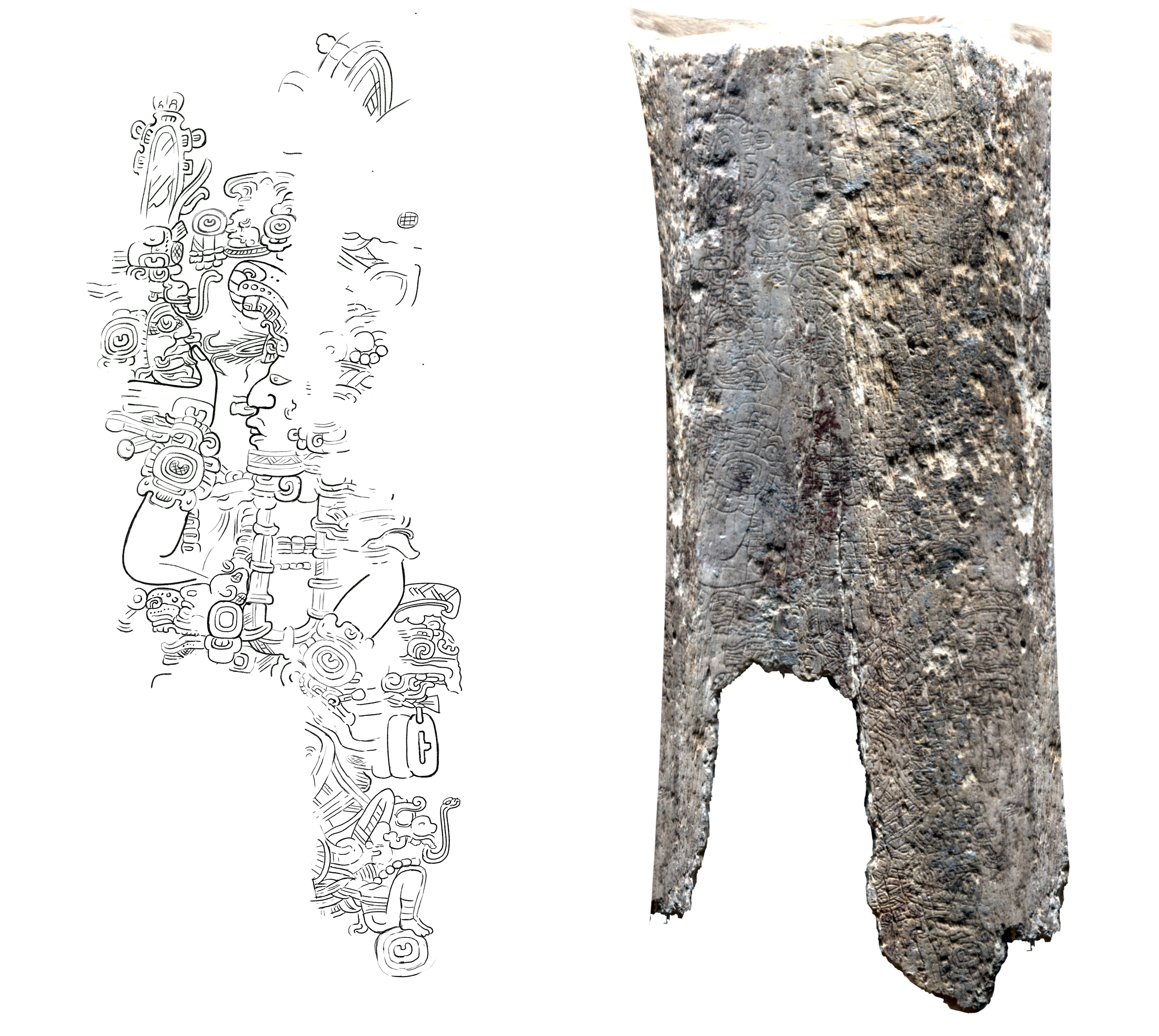Archaeologists have discovered a complete mosaic Maya jade mask bearing an uncanny resemblance to the one Jim Carrey sported in the 1994 film, The Mask. This ancient version, however, was found in the tomb of a Maya king who once ruled from Chochkitam, a lesser-known Maya polity in Guatemala near the borders of modern Mexico and Belize.
The king’s tomb, which dates back 1,700 years, contained an extraordinary array of offerings, including rare shells, human femur bones with words carved into them, and the impressive mosaic jade mask.
Among the hieroglyphs carved into the bones is the name “Itzam Kokaj Bahlam”, which could be the name of the unknown king who is thought to have ruled Chochkitam around 350 CE. Interestingly, one of the bones also includes a depiction of a figure, potentially the ruler, holding the head of a Maya deity, which just happens to look like the assembled mosaic jade mask.
Other hieroglyphs on the artefacts are thought to identify the king’s father and grandfather, which links the individual to other Maya states, such as Tikal and Teotihuacan.
“A discovery like this is a bit like winning the lottery in terms of information,” Francisco Estrada-Belli, the lead archaeologist who discovered the tomb in 2022, said in a statement. Since its discovery, Estrada-Belli and colleagues have been working to preserve, scan, photograph, and interpret the finds. “It opens a window into an obscure time we have very little texts about.”

Incised femur bone beside drawing by Alexandre Tokovinine with the Tulane University Holmul Archaeological Project.
Image courtesy of Tulane University
The fact that Estrada-Belli and his team were able to find these amazing artifacts is quite a stroke of luck, as the tomb appeared to have been looted at some point in the past. But it seems the grave robbers either did a poor job or were unable to finish, as the tomb itself was only about 2 meters (6.5 feet) from where they had stopped digging.
Looting has been a big issue for researchers investigating Maya culture. Detailed information about the height of the Maya classic period – between 250-900 CE – remains obscured because so much archaeological content has been looted over the centuries. This makes the Chochkitam site particularly special.
Despite its close run-in with looters, the tomb itself has survived with little damage (save for a collapsed stone ceiling).
“That was the first amazing thing about it,” Estrada-Belli added. “[I]t was very lucky.”
But then again, perhaps it if was not for the looters, the site may have remained hidden. Its location was only discovered because the team came across the looter’s tunnels, which they identified using lidar technology, which maps out hard-to-find features on the ground by shooting laser beams from an airplane through the dense jungle canopy.
“It’s like taking x-rays of the jungle floor,” Estrada-Belli explained. “It revolutionizes our field. Only now can we see where we’re going instead of just bushwhacking through the jungle hoping to find something.”
The tomb also contained over 16 spondylus shells, a rare genus of spiny oysters that were used as jewelry and currency by the ancient elite or in religious ceremonies. These objects, together with the information carved in the human bones, strengthen the assumed connection between Chochkitam, contemporary Tikal, and the central Mexican site of Teotihuacan.
The discovery comes 100 years after the Chochkitam site was first explored by Fran Blom, an early director of Tulane University.
“All of Indigenous America has a deep and complex history,” said Marcello A. Canuto, the director of Tulane’s Middle American Research Institute (MARI). “For this reason, Tulane recognized early on that it was important and worthy of serious and focused academic interest. Discoveries like this one and others, including those made by other Tulane faculty and students also conducting fieldwork, represent Tulane’s commitment to the study of ancient indigenous American peoples and their accomplishments.”
According to Estrada-Belli, the next step will be to conduct DNA analysis on the bones recovered from the site and to perhaps find more contents hidden in the abandoned pyramid where the tomb lay.
Source Link: 1,700-Year-Old Jade Mask Recovered From Abandoned Ancient Maya Pyramid